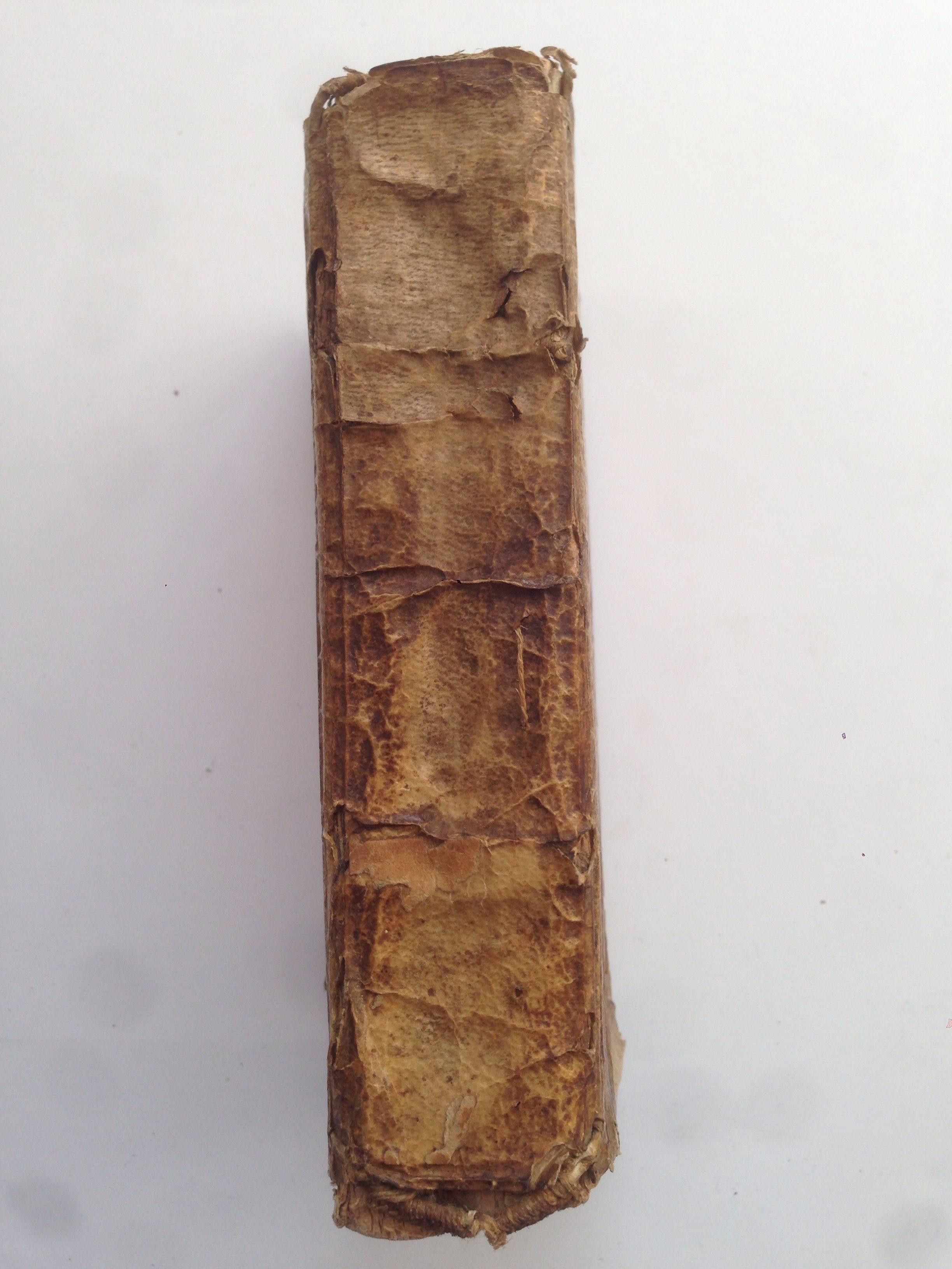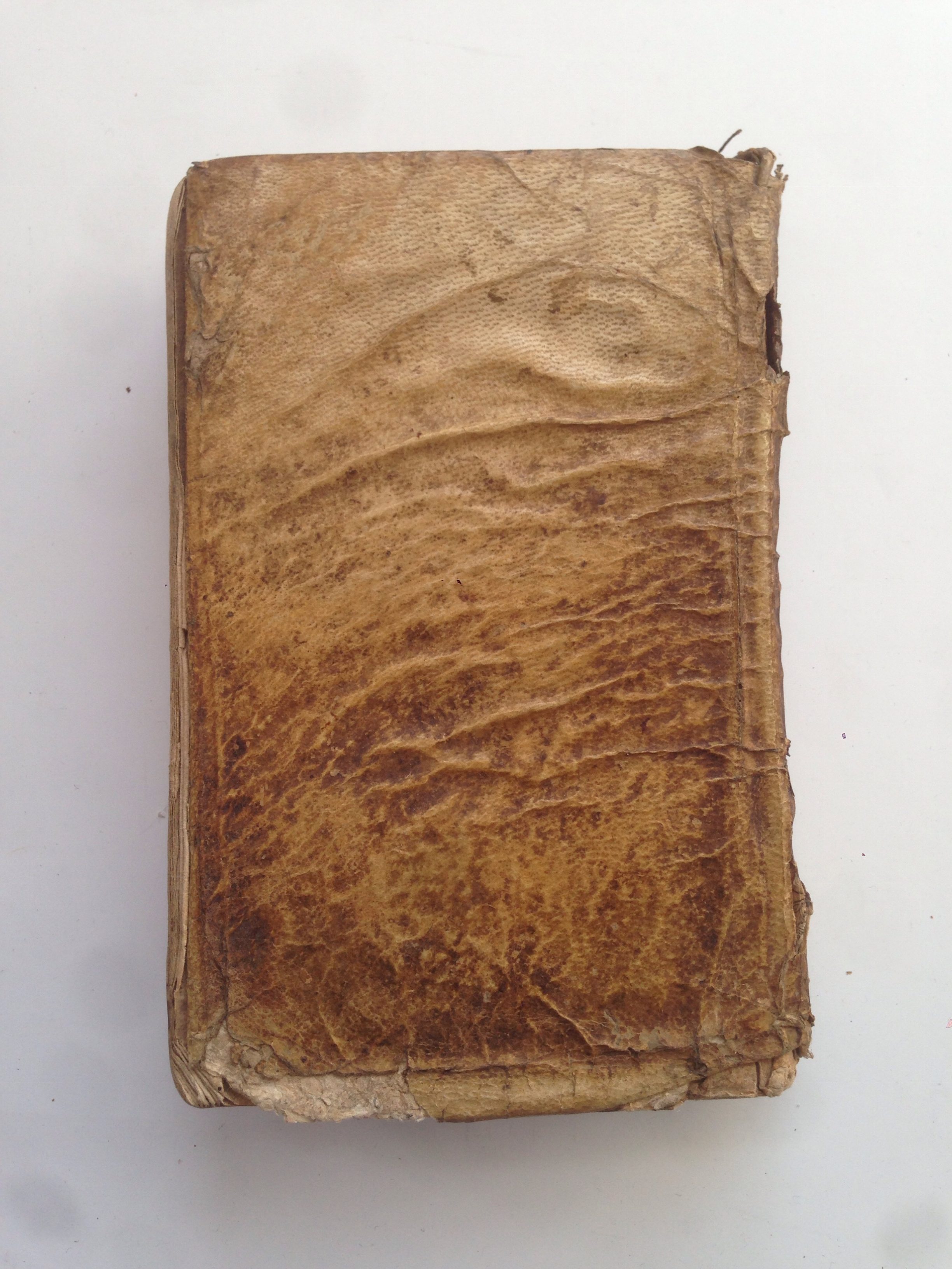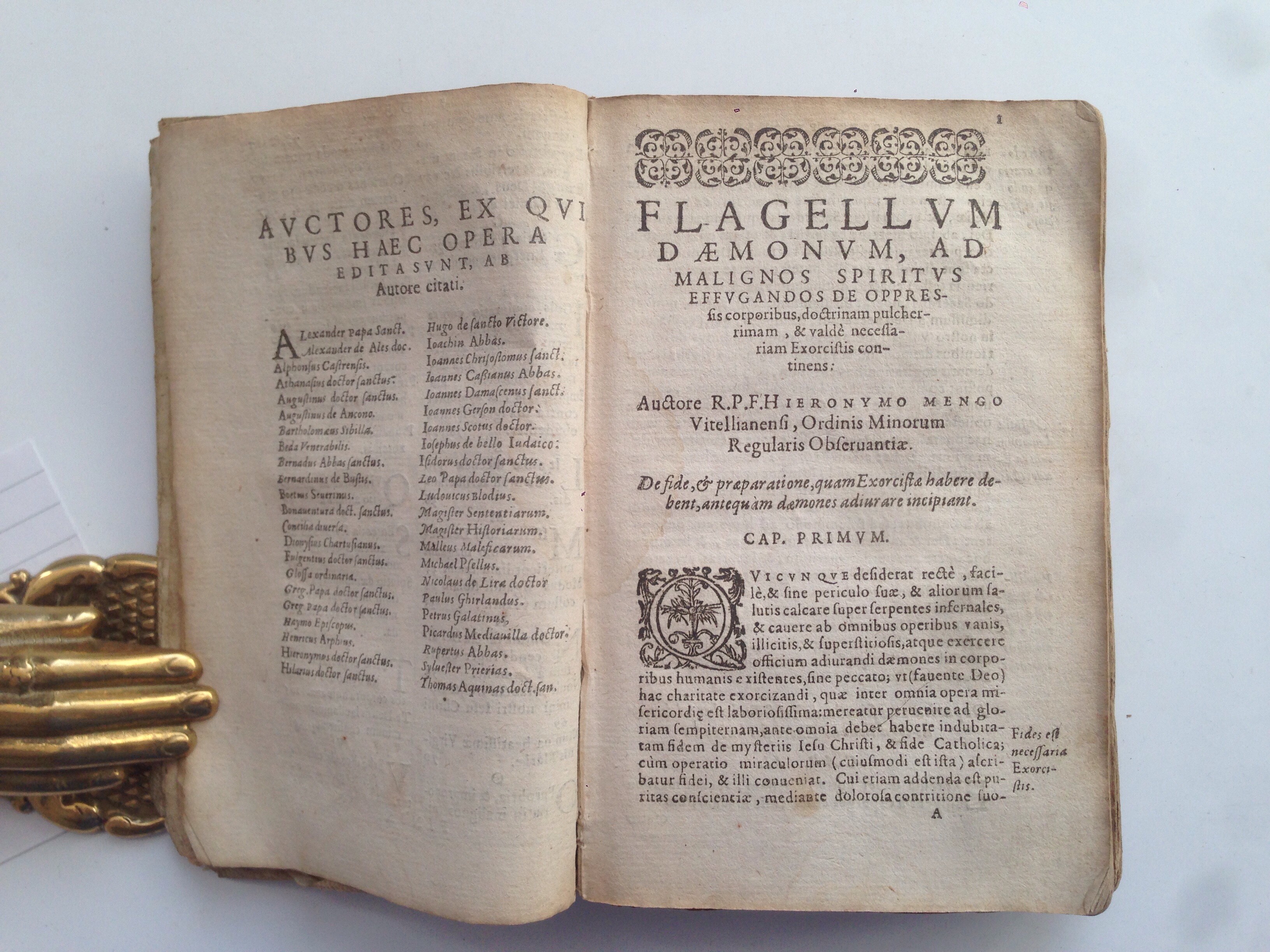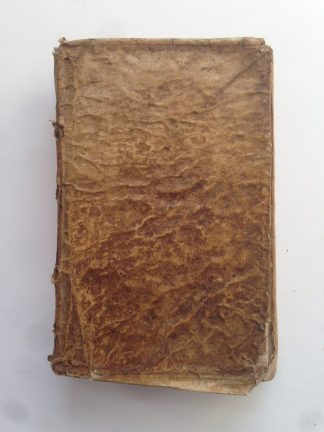MENGHI, Girolamo
Flagellum daemonum exorcismos terribiles. [with] Fustis daemonum, adivrationes, formidabiles
Lyon, apud Franciscum Arnoullet, 1608£1,950.00
8vo. Two works in one volume. 1) pp. [xvi], 214, [ii]: [+] , A-N , O . 2) pp. (xvi) 208:[+] , A-N . Roman letter some Italic. Title pages in red and black with charming woodcut printer’s device of a stag, floriated woodcut initials, typographical headpieces. First title dusty and a little soiled, trimmed close at top edge, touching headline on title only, a little dog-eared at beginning and end, age yellowing with some minor marginal spotting, dark oil stain to upper part of last 10 ll. (possibly an exorcist elixir), minor marginal light waterstain, thumb-mark or spot. A good, doubtless used copy, entirely unsophisticated, in contemporary vellum over thin boards, a little crinkled and soiled, lower corners and spine a little worn.
Excellent editions of two of the most important and influential works on exorcism of the sixteenth century by the most authoritative exorcist of Renaissance Italy, the Franciscan, Girolamo Menghi, later included in the authoritative collection on exorcisms the ‘Thesaurus exorcismorum’. Menghi was born in Viadana in the province of Mantua. At the age of 20 he joined the Franciscans, rising to provincial superior in 1598. A theologian and exorcist, he practiced in Bologna, and was known as ‘the father of the exorcists’ art’. His best known work, ‘Flagellum Daemonum’ was translated into Italian and published in 1576, as ‘Compendio dell’arte essorcisica’ so it would reach the widest audience possible. “In 1576 he (Menghi) published his Flagellum daemonum (the Daemon’s Scourge), followed by Fustus daemonum (The Daemon’s Bludgeon) in 1584. Both books were published in one volume from 1598 and soon became popular all over Europe. The texts consist of both a theoretical treatise and a hands on guide describing actual exorcisms. Fustis daemonum lists exorcisms that follow a strict formula: after an initial prayer, signs of the cross are made, followed by incantations, a reading from the Gospels, and repeated orations” Joseph P. Laycock ‘Spirit Possession around the World: Possession, Communion, and Demon.’
“Girolamo Menghi’s Flagellum Daemonum .. was a collection of seven rites of exorcism with detailed instructions on the preparation of the priest and the victim and what sorts of gestures or paraphernalia the priest should employ. No magic wands are mentioned, but the priest could make the Sign of the Cross with great frequency and drape the victim with his stole. He could use his book of exorcism, holy water, fire, or images of the devil. Various herbs or minerals burnt in smudges could help drive out the devil. Various sacramentals had to be specially blest – in essence, purified to make sure they had no diabolic residue – and there are rites of blessing given in this manual as well” Jane Davidson, ‘Early Modern Supernatural: The Dark Side of European Culture, 1400-1700.’ Menghi prefaces the Flagellum with a vehement defence of exorcism. Dedicating the work to Cardinal Gabriele Paleotto, Menghi advocates a much more aggressive promotion and publication of books of exorcisms. He states it is impossible to extirpate this plague unless the art of performing exorcisms is fully known and appreciated throughout the Catholic world. “Worried about the perceived chaos that characterised exorcismal activities in Italy and the unorthodox practices employed by many exorcists, Menghi set himself the goal of compiling all of the existing authorized rituals into a manual for the use of parish exorcists. His books instruct exorcists on how to diagnose a genuine diabolic possession, how to confront the demons, and how to cast out evil spirits, and they contain numerous exorcismal liturgies. This concrete and practical approach was due partly to the events of the recent past. A certain ‘aegritudo’, a mysterious and deadly infection, was threatening innumerable victims, Menghi stated… [he] also intended to prove that demons possessed human beings and animals, and .. argued that ‘medicina celeste,’ as it was practiced by ecclesiastical exorcists, was the only appropriate means to overcome diabolic power” Moshe Sluhovsky.
Menghi was well acquainted with demoniacal literature; the authors he quotes range from Avicenna to Michael Psellus, from Lull to Sprenger. Despite his contemporary fame his works were placed on the index of forbidden books by the Sant’Uffizio in the C18th. “Girolamo Menghi articulated a philosophy of evil that reflected the social and religious culture of his time. …. He tried to arrange devils according to their function, spheres of action and bad habits – just as Pseudo-Dionysius the Areopagite had arranged angels in his ‘Celestial Hierarchy’”. Gaetano Paxia.
BM STC fr. C17th. p. 369. M 906. Caillet 7378. (other editions) “Curieux recueils d’exorcismes tardivement mis a l’index en 1709.” Thorndike VI pp. 555-8.In stock








